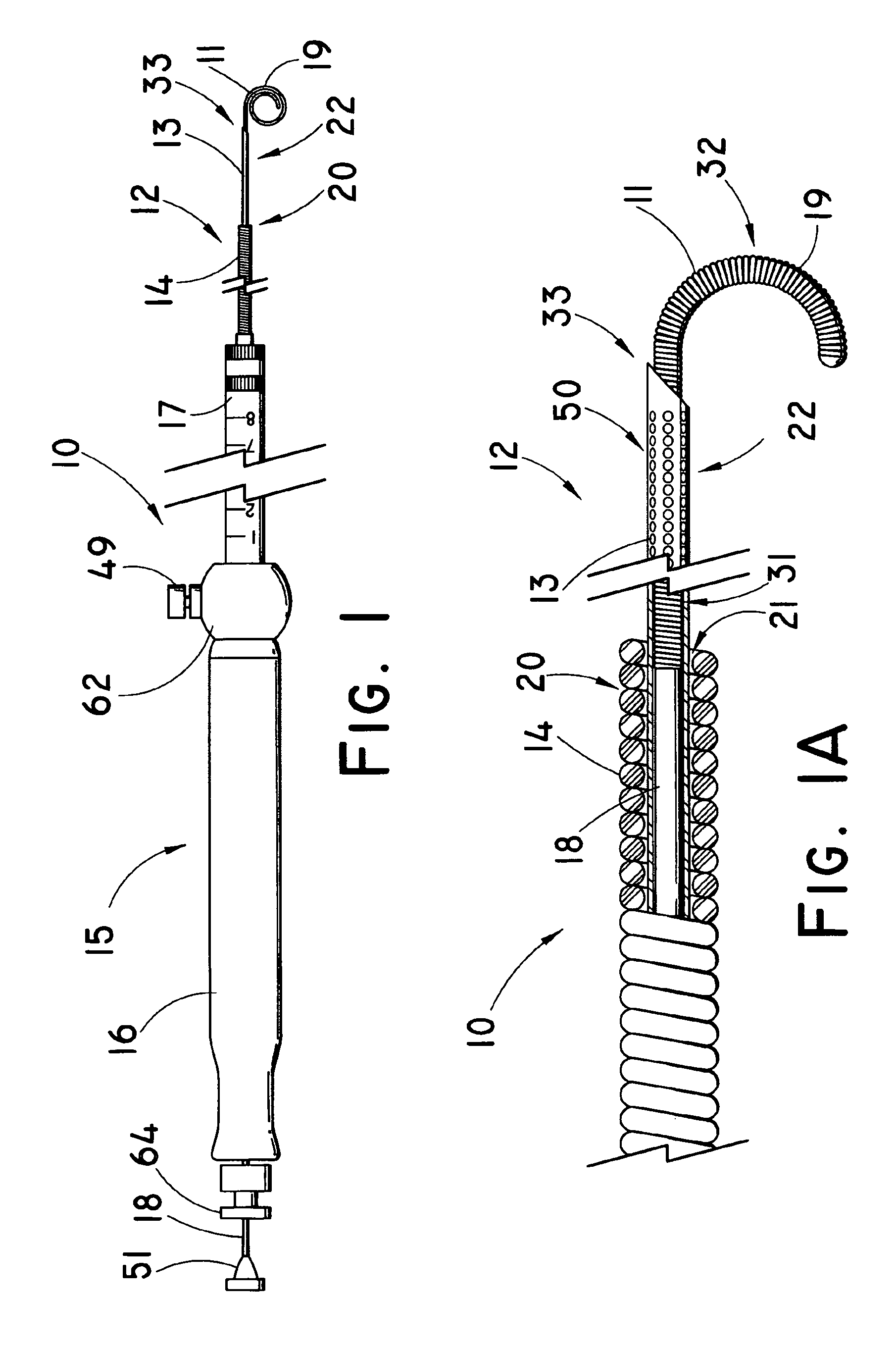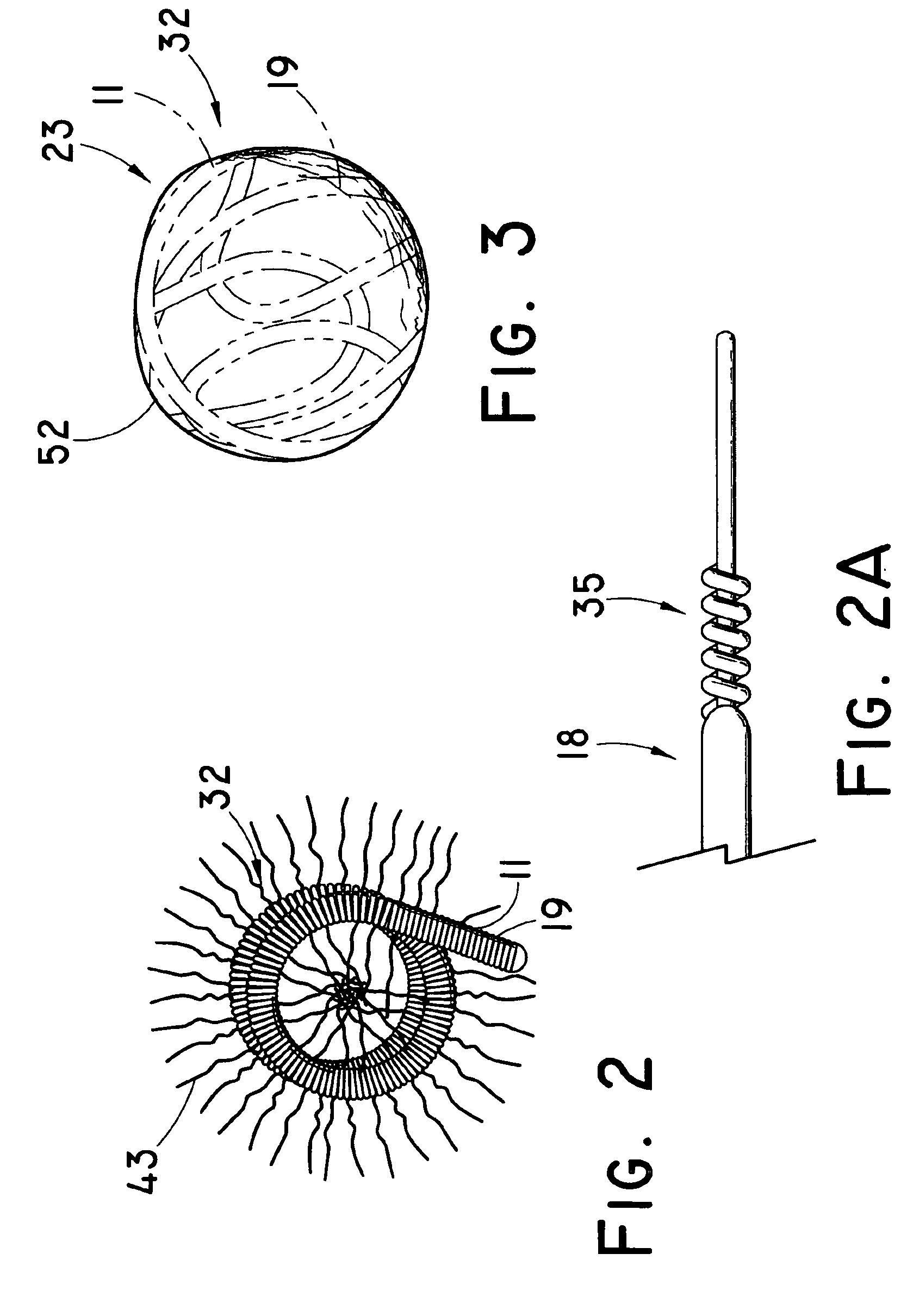Method and apparatus for augmentation of a sphincter
a sphincter and sphincter technology, applied in the field of medical devices, can solve the problems of tissue fold loss, suture breakage or gradual erode through the tissue, and surgical staple loss, etc., to achieve the effect of reducing the amount of metal, avoiding image distortion, and increasing complian
- Summary
- Abstract
- Description
- Claims
- Application Information
AI Technical Summary
Benefits of technology
Problems solved by technology
Method used
Image
Examples
Embodiment Construction
[0031]The present invention, exemplary embodiments of which are depicted in FIGS. 1-18, includes an apparatus 10 and method for introducing one or more implantable members 11 using an introducer member 13, such as an endoscopic needle, into a pocket formed within the submucosal layer of the gastroesophageal (GE) junction or lower esophageal sphincter (LES) 27 to augment and tighten the LES to provide a more effective barrier against stomach acid reflux. In the illustrative embodiment depicted in FIGS. 1 and 1A, the apparatus 10 comprises a delivery system 12 that is similar in configuration to the ECHOTIP® Ultrasound Needle (Wilson-Cook Medical, Inc.), which includes a needle portion 33 (e.g., 19 ga), typically having a beveled distal tip 33, that is extendable from an outer sheath portion 14 (comprised of a coiled sheath member in this particular embodiment), each of which are attached to a coaxial handle assembly 15. The coaxial handle assembly 15 comprises a first portion 16 atta...
PUM
 Login to View More
Login to View More Abstract
Description
Claims
Application Information
 Login to View More
Login to View More - R&D
- Intellectual Property
- Life Sciences
- Materials
- Tech Scout
- Unparalleled Data Quality
- Higher Quality Content
- 60% Fewer Hallucinations
Browse by: Latest US Patents, China's latest patents, Technical Efficacy Thesaurus, Application Domain, Technology Topic, Popular Technical Reports.
© 2025 PatSnap. All rights reserved.Legal|Privacy policy|Modern Slavery Act Transparency Statement|Sitemap|About US| Contact US: help@patsnap.com



